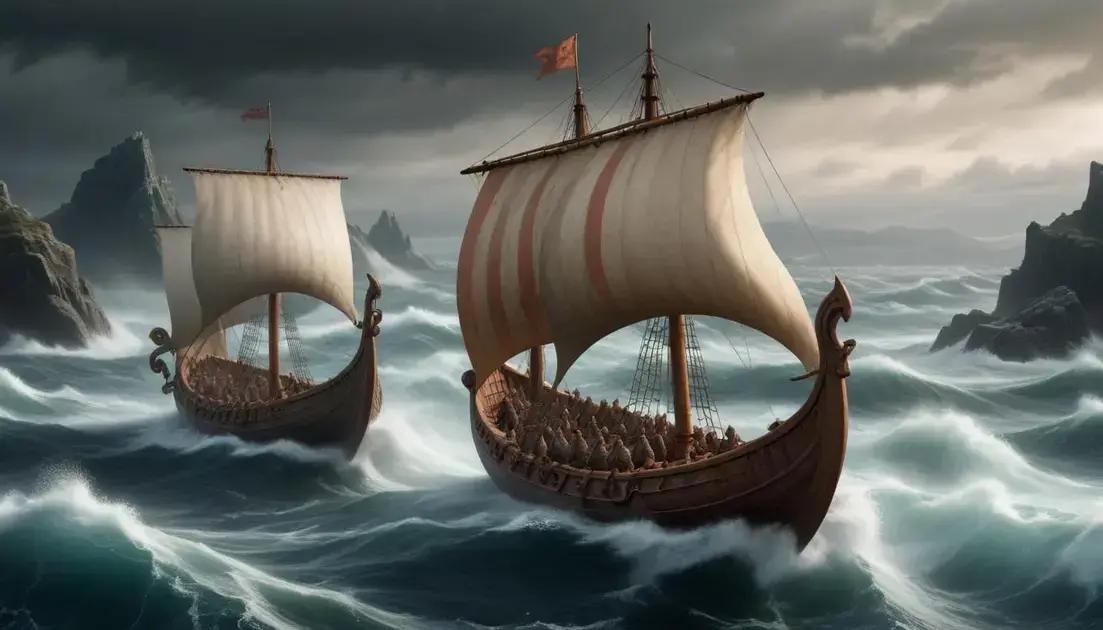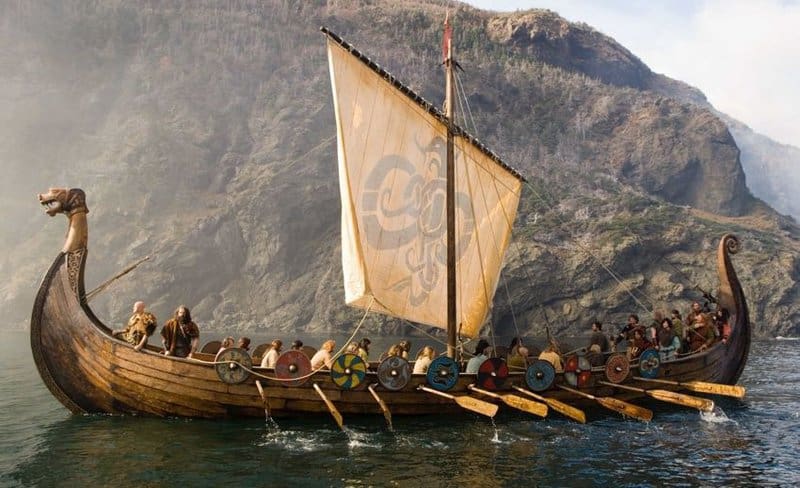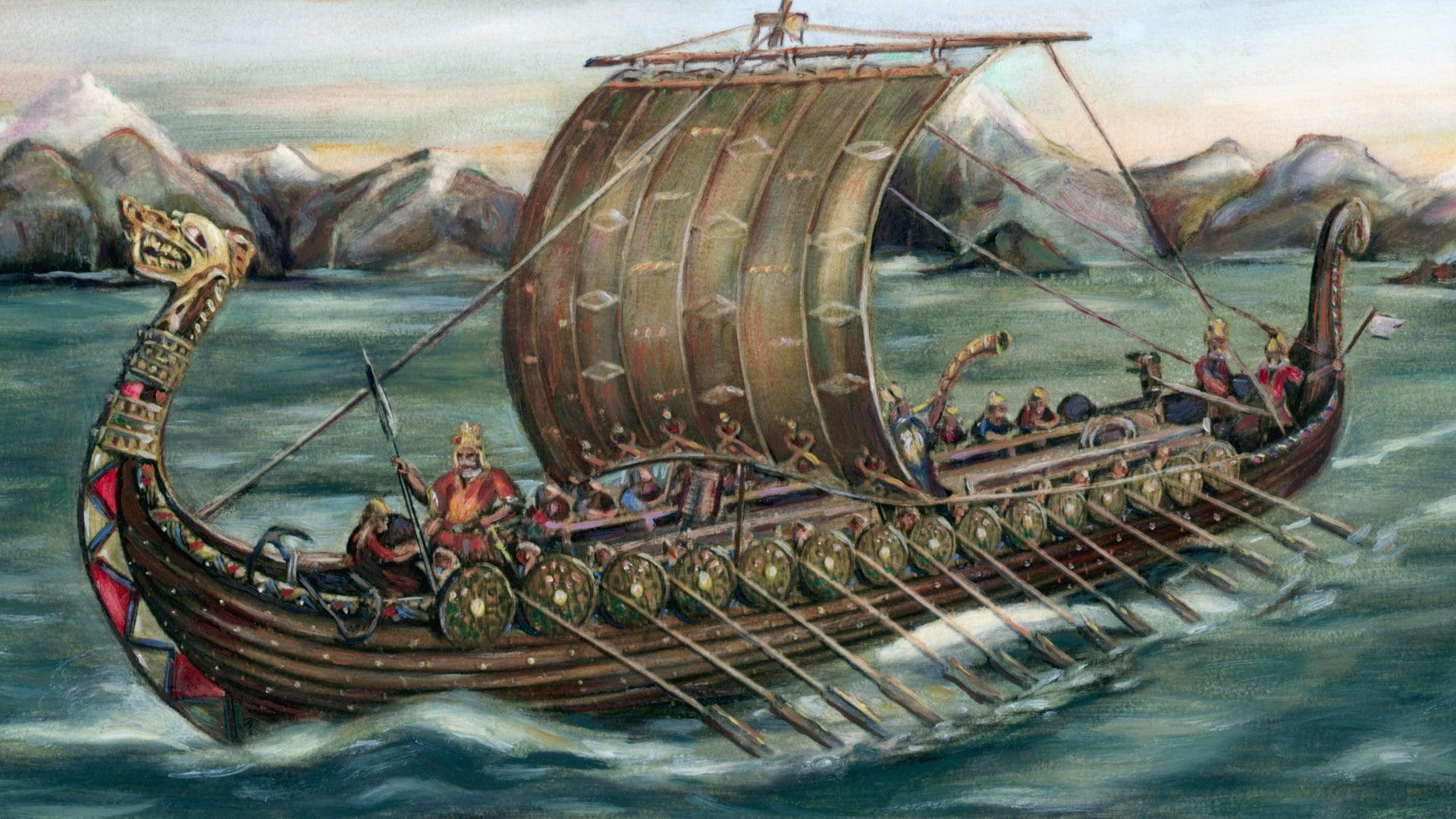
Vikings in Europe: Invasions, Exchanges and Myths
Viking culture greatly influences modern society through their rich mythology and historic explorations. The Norse gods, such as Odin and Thor, along with their legendary sagas, have left a lasting legacy in literature, film, and games. Their seafaring innovations and cultural exchanges during the Viking Age shaped languages and daily life throughout Europe, demonstrating the resilience and spirit of adventure that continues to inspire today.
Have you ever wondered about the impact of Vikings on Europe? These seafaring warriors weren’t just conquerors; they were traders and cultural exchange agents.
Introduction to Viking invasions
The Viking invasions were a major part of European history. Beginning in the late 8th century, these Norse warriors set sail from Scandinavia. They traveled far and wide, reaching places like England, Ireland, and even the shores of North America.
The Vikings were not just fierce fighters; they were skilled sailors and traders too. Their longships allowed them to navigate rivers and oceans with ease. This helped them access a variety of lands and resources.
The Impact of Viking Raids
These invasions led to significant changes in Europe. Towns and villages were often attacked, leading to chaos and fear. However, the Vikings also brought cultural exchanges. They traded goods and ideas with the locals, which shaped future societies.
Viking Settlements
As they settled in new territories, they mixed with local populations. This led to the creation of new communities and influenced customs, language, and even governance.
The legacy of the Vikings persists today. Their adventures have inspired stories, movies, and even academic studies. Understanding their impact helps us grasp the complexities of European history.
Cultural exchanges during the Viking Age
Cultural exchanges during the Viking Age were vital for shaping Europe. As Vikings invaded and settled in different regions, they interacted with local peoples. This mixing of cultures led to significant changes.
The Vikings brought their own customs and traditions. For instance, their art and craftsmanship were unique. They introduced new styles to the places they settled in. This influenced local artisans and led to new forms of expression.
Trade and Interaction
Trade was a big part of Viking life. They exchanged goods like silver, furs, and jewelry with other cultures. In return, they obtained items such as spices, wine, and textiles. This trade helped to spread ideas and practices across lands.
The Role of Religion
Religion played an essential role, too. Vikings shared their Norse beliefs while also adopting elements from other faiths. As they settled, they began to blend their traditions with local beliefs. This created a rich tapestry of spiritual life.
The legacy of these cultural exchanges is still evident today. Modern languages, traditions, and even festivals have roots from the Viking Age. Exploring this blend helps us better understand our shared history.
Legacies of Viking exploration
The legacies of Viking exploration are evident all around us today. These Norse adventurers traveled far and wide, leaving their mark on various cultures. Their journeys changed the course of history in many ways.
One notable legacy is their influence on language. Many words in modern languages come from Old Norse. For example, words like “sky,” “window,” and “husband” have Norse roots. This shows how their language blended with local dialects.
Architectural Contributions
The Vikings also impacted architecture. Their unique building techniques inspired the design of houses and fortifications in many regions. Settlements often featured longhouses made of wood, which influenced local building styles.
Seafaring Innovations
The Vikings were expert shipbuilders. Their advanced ships allowed for long-distance travel and trade. This innovation paved the way for future exploration and maritime technologies.
Even today, the spirit of exploration remains alive, inspired by the Vikings. Many people admire their adventurous nature. Their journeys remind us of the importance of curiosity and discovery.
Viking myths and their influences
Viking myths are a fascinating part of their culture. These stories shape how we understand the Norse world. They offer insights into their beliefs, values, and everyday life.
The most famous figures in Viking mythology include gods like Odin, Thor, and Freyja. Odin, for example, is known as the god of wisdom and war. Thor, with his mighty hammer, symbolizes strength and protection.
Myth and Daily Life
These myths influenced many aspects of Viking life. They guided how people viewed nature and their place in the world. Festivals and rituals often celebrated these deities, reinforcing community bonds.
Literary Influence
Viking myths also left a mark on literature. The famous Poetic Edda and Prose Edda are key texts that record these tales. They inspire modern stories, movies, and games.
Even today, many themes from Norse mythology appear in popular culture. Characters in books and films often draw from these ancient legends. This shows how enduring the impact of Viking myths truly is.
Conclusion
In conclusion, the influence of Viking culture is still felt today. From their myths and legends to their impactful explorations, the Vikings shaped many aspects of our world. Their stories teach us about adventure, bravery, and the complexities of human nature.
Modern society still draws from these ancient tales. Norse mythology inspires books, movies, and games. This connection to the past shows how important it is to honor and understand our histories. By exploring Viking culture, we can learn valuable lessons and appreciate the rich tapestry of humanity.


